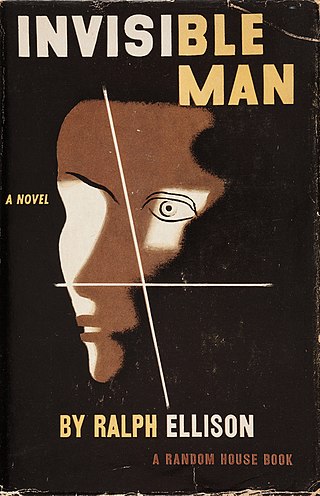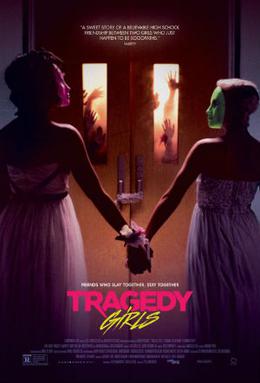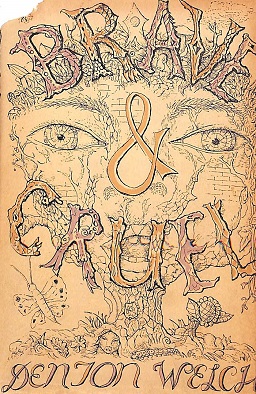Background
Denton Welch was anxious to complete the novel when his health, precarious since his accident, was worsening. As described in the foreword: "As late as the summer of 1948, long after most people in his condition would have adopted the life of a permanent invalid, his tremendous will-power enabled him to live normally and even strenuously during the increasingly short intervals between the crises of his illness.... Towards the end he could only work for three or four minutes at a time... Complication after complication set in.... Even then, he made colossal and nearly successful attempts to finish the book." [1] The foreword was by Eric Oliver, with whom the writer shared a house for the last few years of his life, and who was instrumental in the book being published by John Lehmann. [2]
The title is not Welch's own. However it reflects the description in the book of the narrator's first conscious impression, when someone is trying to talk to him moments after the accident: "I heard a voice through a great cloud of agony and sickness.... Everything about me seemed to be reeling and breaking up. My whole body was screaming with pain...." In his autobiography, Lehmann states that it was he who gave the work its title. [3]
Summary
Riding his bicycle from his lodgings in Crooms Hill in South London to visit his uncle in Surrey on a Whitsun holiday, the narrator, [4] an art student, is hit by a car. [5]
The following chapters contain his careful observations of his hospital [6] ward, the staff, the other patients, and his visitors, [7] and he notes particular things that people say. Sometimes there are memories of episodes in his life before the accident, described in the same way. Mundane details are made interesting by the quality of the prose, in which every feature of his life, and his reaction to it, comes under his calm scrutiny.
More than once, he describes a fellow patient who dies soon after he gets to know him, such as Ray, who had suffered a brain injury: "The futile ending of Ray's life dismayed me. We both had felt the savage change from fair to dark; now he could feel no more, but what was left to me?" [8]
He is moved to another hospital [9] where the specialist can visit him regularly; later his brother arranges his move to a nursing home near an unspecified [10] seaside town in Kent.
At the nursing home, where his doctor is Dr. Farley, [11] he starts to take regular walks, and sometimes takes a bus into town; on one occasion Dr. Farley asks what his plans are for the future.
What was my life? It was all a scraping together of little incidents, a sucking of them dry before I hurried on in search of one more drop of nectar.
The thought of what I should try to do in the world came as a black face looming nearer and nearer....
With such emptiness inside me I turned fiercely to Dr. Farley, until he grew to have the significance of some model person. I would test others by him and find them unbelievably sham and tawdry. Intolerence seemed to grow with wretchedness. I would apply the test to myself with the same destroying result. Everyone was contemptible, except perhaps Dr. Farley. [12]
When he hears that Dr. Farley is leaving the area, he wants to leave as well. After Dr. Farley has left, he travels by train to visit him for the day. His landlady at his lodgings before the accident, Miss Hellier, [13] is also there: she has agreed to be his housekeeper when he finds accommodation. They have tea with Dr. Farley; the incomplete novel ends when Dr. Farley has driven them to a property nearby which the estate agent has suggested. [14]
In the notes Welch left with the unfinished manuscript, there are the following sentences:
I concentrated on the rhythm of my breathing. I felt glad that I should always have this with me till the day I died.
Welch's biographer, James Methuen-Campbell, suggests that this may have been how Welch intended to finish the novel. [15]
Critical response
Despite the book being published incomplete, responses to it were almost universally positive, ironically the most positive set of notices Welch ever received.
Writing in The Guardian , Elizabeth Jenkins called Welch's "capacity for description... astounding, [his] angle of vision unusual... his felicity inexhaustible... The book is a unique achievement." [16] An unnamed reviewer in Punch called it "[t]he best of his books... with the curious vitality of a minor classic." [17] The editor of Readers News, the newsletter of the Readers Union bookclub, exhorted members to read the book, the work of "a promising talent, even perhaps genius... with extra care." [18] Writing in The Daily Herald , John Betjeman was less equivocal. He simply entitled his review "Here's a work of genius." [19]

Sir John Betjeman was an English poet, writer, and broadcaster. He was Poet Laureate from 1972 until his death. He was a founding member of The Victorian Society and a passionate defender of Victorian architecture, helping to save St Pancras railway station from demolition. He began his career as a journalist and ended it as one of the most popular British Poets Laureate and a much-loved figure on British television.

Slaughterhouse-Five, or, The Children's Crusade: A Duty-Dance with Death is a 1969 semi-autobiographic science fiction-infused anti-war novel by Kurt Vonnegut. It follows the life and experiences of Billy Pilgrim, from his early years, to his time as an American soldier and chaplain's assistant during World War II, to the post-war years, with Billy occasionally traveling through time. The text centers on Billy's capture by the German Army and his survival of the Allied firebombing of Dresden as a prisoner of war, an experience which Vonnegut himself lived through as an American serviceman. The work has been called an example of "unmatched moral clarity" and "one of the most enduring anti-war novels of all time".

Invisible Man is Ralph Ellison's first novel, published by Random House in 1952. It addresses many of the social and intellectual issues faced by African Americans in the early 20th century, including black nationalism, the relationship between black identity and Marxism, and the reformist racial policies of Booker T. Washington, as well as issues of individuality and personal identity.

The Vicar of Wakefield, subtitled A Tale, Supposed to be written by Himself, is a novel by Anglo-Irish writer Oliver Goldsmith (1728–1774). It was written from 1761 to 1762 and published in 1766. It was one of the most popular and widely read 18th-century novels among Victorians.

Rudolf John Frederick Lehmann was an English publisher, poet and man of letters. He founded the periodicals New Writing and The London Magazine, and the publishing house of John Lehmann Limited.

Bernard Jocelyn Brooke was an English writer and naturalist. He wrote several unique, semi-autobiographical novels, as well as some poetry. His most famous works include the Orchid Trilogy—The Military Orchid (1948), A Mine of Serpents (1949), and The Goose Cathedral (1950)—and The Image of a Drawn Sword (1950).

Maurice Denton Welch was a British writer and painter, admired for his vivid prose and precise descriptions.
Michael De-la-Noy was a British journalist and author. He wrote more than 20 books, the most successful being The Queen Behind the Throne. De-la-Noy was also noted for being fired in 1970 as press secretary to Archbishop of Canterbury Michael Ramsey after writing an article in support of a bisexual and transvestite colonel, which was seen as too liberal for the Church of England.

A Passion for Churches is a 1974 BBC television documentary written and presented by the then Poet Laureate Sir John Betjeman and produced and directed by Edward Mirzoeff. Commissioned as a follow-up to the critically acclaimed 1973 documentary Metro-land, the film offers Betjeman's personal poetic record of the various rituals taking place throughout the Anglican Diocese of Norwich and its churches in the run-up to Easter Sunday using the framing device of the Holy sacraments.

Tragedy Girls is a 2017 American comedy slasher film directed by Tyler MacIntyre, written by Chris Lee Hill and MacIntyre, and starring Alexandra Shipp, Brianna Hildebrand, Josh Hutcherson, Craig Robinson, Kevin Durand and Jack Quaid. It was released on October 20, 2017, by Gunpowder & Sky.
Noël Gilford Adeney was a British artist, known for her landscape and still life paintings and a member of The London Group.
Annie Denton Cridge (1825–1875) was a UK-born suffragist, socialist, lecturer, and author. She moved to the United States around 1842 during the industrial and Victorian eras. Cridge was an author who wrote primarily about women's rights and spiritualism. In the mid-nineteenth century, spiritualism was considered the only religious group that recognized the equality of women. Ann Braude, in her book, Radical Spirits, defines spiritualism as "a new religious movement aimed at proving the immortality of the soul by establishing communication with the spirits of the dead… It provided an alternative to the established religious order. It held two attractions to thousands of Americans: rebellion against death and rebellion against authority".

Maiden Voyage is an autobiographical novel by the English writer and artist Denton Welch, who became a writer after a serious accident which had long-term effects on his health. The novel describes a period during the 1930s: his last term at school, and the following weeks living in Shanghai, China, where his father had a business.

I Left My Grandfather's House is an uncompleted autobiographical novel by the English author and painter Denton Welch.

The Denton Welch Journals refers to a number of works which published the notebooks of the English writer and painter Denton Welch. These he kept from July 1942 until four months before his death in 1948. To date, three versions have been issued: two published by Hamish Hamilton and one by Viking Penguin (1984).

A Last Sheaf is the title given to the second posthumous publication of works by the writer and painter Denton Welch. Published in 1951 by John Lehmann, it followed A Voice Through a Cloud, issued by Lehmann the previous year.

Brave and Cruel and Other Stories is the third book by the English author and painter Denton Welch. A collection of short stories, it was the last publication he worked on.

In Youth is Pleasure is the second published novel by the English writer and painter Denton Welch. It was first published in February 1945 by Routledge. It was also the last novel to be issued in his lifetime.

Dumb Instrument is the title given to the posthumous 1976 anthology of poetry by the English writer and artist Denton Welch. It derives from the fifth line of a sestet which appears on the title page of the anthology only.

Knulp is a short story by Hermann Hesse, published in 1915 by S. Fischer Verlag. The three stories are about a vagrant called Knulp. Hesse wrote these stories between 1907 and 1914 are among his “Gerbersau” stories.

















